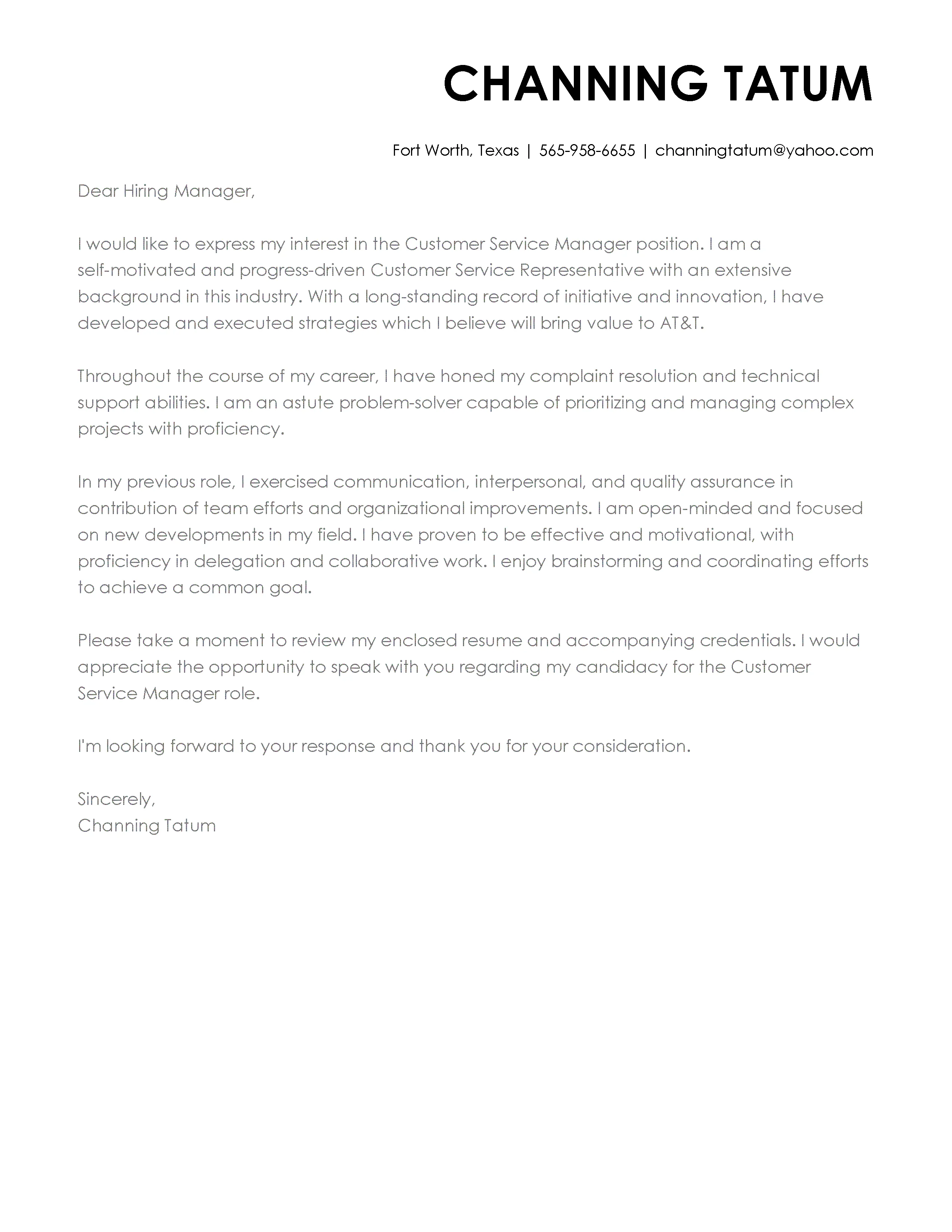Understanding the Importance of a Customer Service Cover Letter
In the competitive job market, a well-crafted customer service cover letter can be the key to unlocking your dream role. It provides an opportunity to showcase your personality, skills, and enthusiasm in a way that a resume alone cannot. This guide will walk you through the essentials of creating a compelling cover letter that grabs the attention of hiring managers and sets you apart from other applicants. A cover letter is more than just a formality; it’s your first impression and a crucial tool in the job application process. It offers a chance to connect with the hiring manager on a personal level and demonstrate why you’re the perfect fit for the position.
Why a Cover Letter Matters
A customer service cover letter allows you to provide context to your resume, explaining how your experiences align with the job requirements. It’s an opportunity to tell a story, highlighting your achievements and demonstrating your passion for customer service. It’s a chance to highlight your soft skills that are crucial for this role such as empathy and communication skills. By personalizing your cover letter, you show that you’ve taken the time to understand the company and the specific job, setting you apart from generic applicants.
Highlighting Relevant Skills
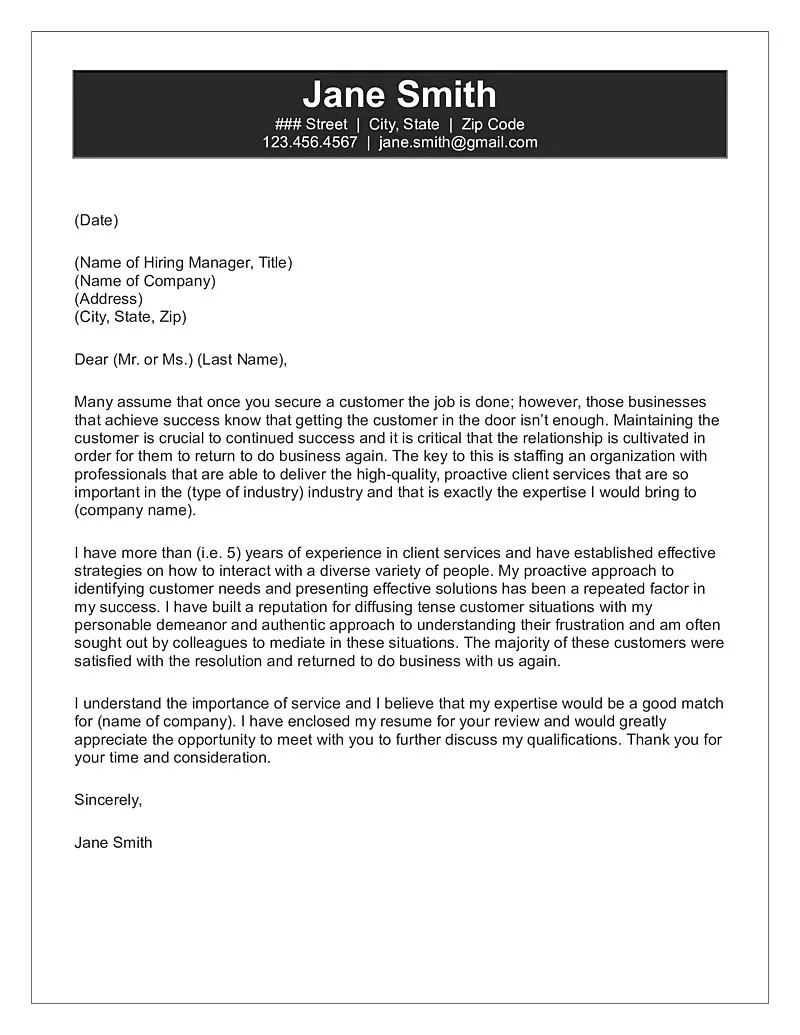
Customer service roles demand a unique blend of technical abilities and interpersonal skills. Your cover letter is the perfect place to emphasize these, using specific examples to illustrate your proficiency. It’s important to focus on skills such as active listening, problem-solving, conflict resolution, and clear communication. Mentioning these skills directly and providing evidence of how you’ve used them in the past demonstrates your value to potential employers. Make sure that you tailor your cover letter to each job, highlighting the skills that are most relevant to the specific position.
Key Components of a Customer Service Cover Letter
A well-structured cover letter follows a logical format that includes essential information. From your contact details to your closing, each section should be carefully crafted to convey professionalism and enthusiasm. Sticking to this structure not only makes it easy for the hiring manager to understand your key strengths but also shows that you pay attention to details.
Contact Information and Date
At the top of your cover letter, include your full name, address, phone number, and email address. These details ensure that the employer can easily contact you. Following your contact information, include the date, followed by the hiring manager’s name (if known), their title, and the company’s name and address. This attention to detail underscores your professionalism and provides the necessary context for your application.
The Greeting
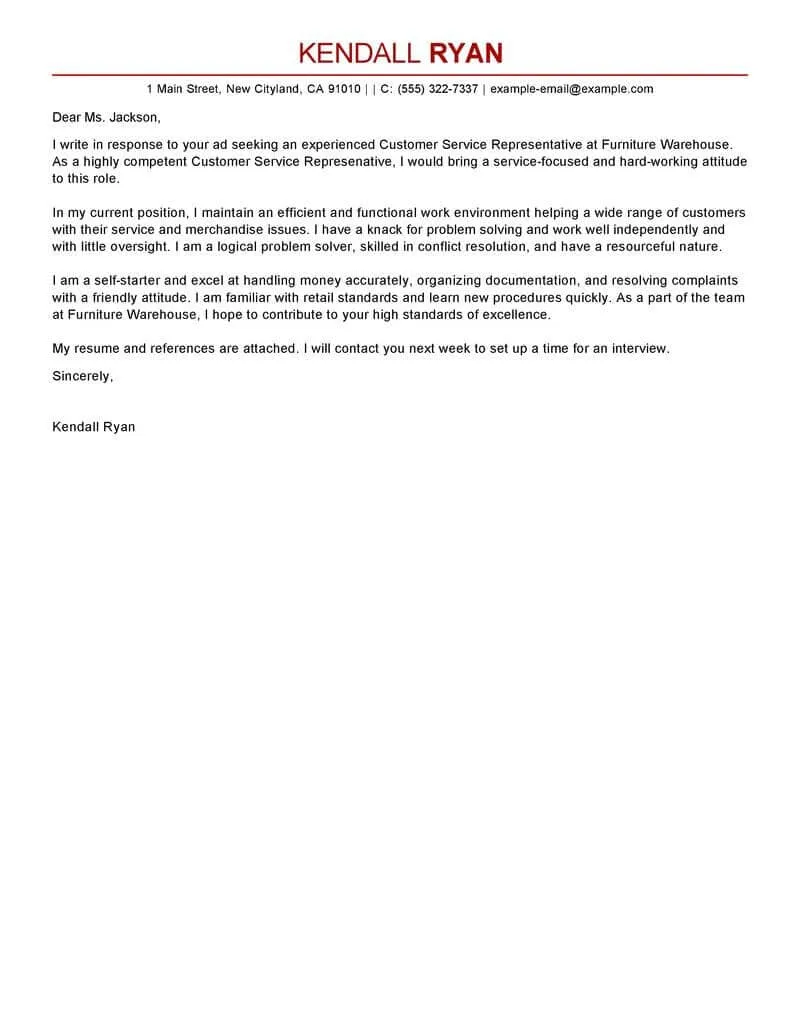
Begin your cover letter with a professional greeting. If you know the hiring manager’s name, use it (e.g., “Dear Mr. Smith”). If not, use a general greeting such as “Dear Hiring Manager.” Avoid generic greetings such as “To Whom It May Concern,” as these may appear impersonal. Make sure you spell the name of the hiring manager correctly, as this can significantly influence the hiring manager.
The Introduction
In your introduction, state the position you’re applying for and how you found the job opportunity. Briefly introduce yourself and express your enthusiasm for the role and the company. This section should be concise and grab the reader’s attention immediately. Mentioning your most relevant skill or experience right away is a great way to make a strong first impression. Explain what attracted you to the specific job.
Body Paragraphs
The body paragraphs are where you showcase your skills and experience. Use these sections to provide specific examples of how you’ve excelled in customer service roles. Each paragraph should address a key requirement of the job. Highlight your accomplishments and back them up with quantifiable results. Focus on skills such as conflict resolution, communication, and problem-solving to demonstrate your value.
Highlighting Customer Service Experience
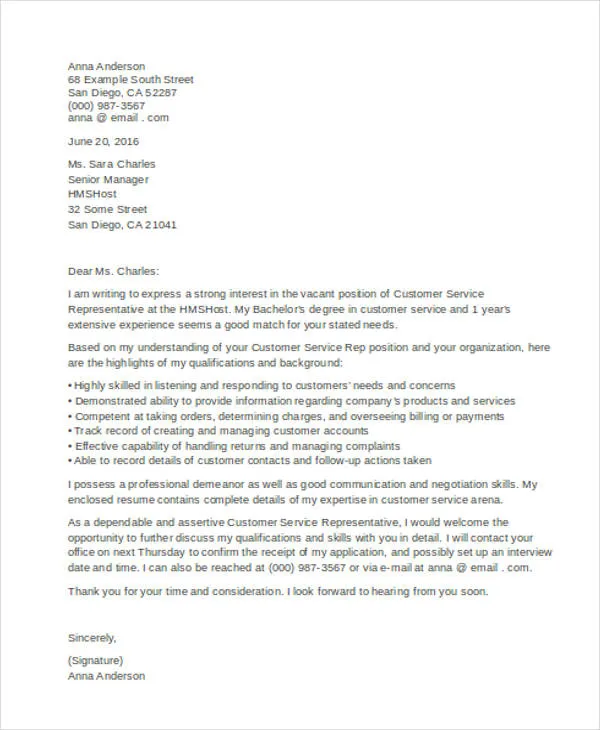
When describing your experience, be specific about your roles and responsibilities. Use action verbs to paint a clear picture of what you did. Focus on tasks that required customer interaction. Focus on your ability to resolve issues and manage customer expectations. Provide the names of the companies you’ve worked with. This section gives a clear understanding of the experience.
Quantifying Achievements
Whenever possible, quantify your achievements with numbers and statistics. For example, mention how you increased customer satisfaction scores or how you reduced resolution times. This is a powerful way to demonstrate the impact you’ve had in previous roles. Providing specific numbers makes your claims more credible and shows that you have a track record of success. Use specific metrics to highlight the impact.
Showcasing Soft Skills
Customer service is heavily reliant on soft skills. Highlight your abilities in communication, empathy, and problem-solving. Explain how you’ve used these skills to resolve customer issues, build relationships, and improve the overall customer experience. Providing examples of how you’ve demonstrated these skills makes your application more compelling. Talk about any specific situations.
The Closing
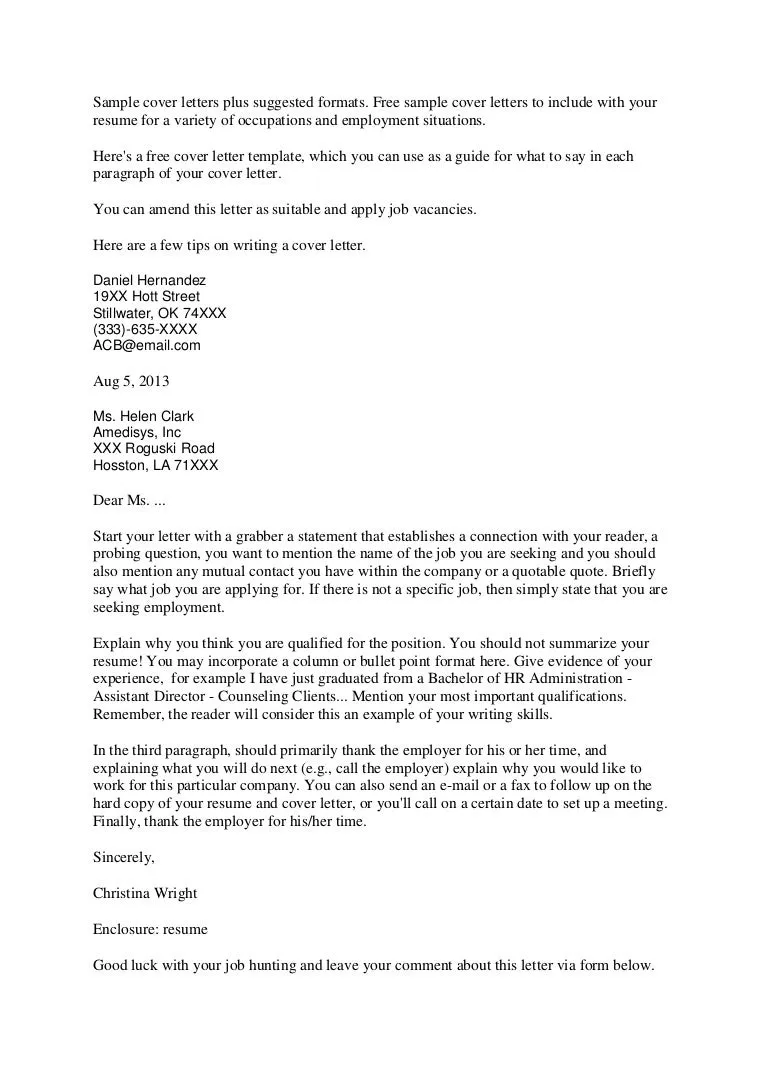
In your closing paragraph, reiterate your interest in the position and the company. Summarize your key qualifications and express your confidence in your ability to contribute to their team. Thank the hiring manager for their time and consideration. Indicate your availability for an interview, and mention your contact information.
The Sign-off
End your cover letter with a professional sign-off, such as “Sincerely,” “Best regards,” or “Thank you.” Leave space for your signature if you are printing and mailing your cover letter, or type your full name below the sign-off. Your sign-off should align with the tone of your letter.
Formatting and Style Tips
The formatting of your cover letter is just as important as its content. A well-formatted letter is easy to read and demonstrates your attention to detail. Poor formatting can detract from your message and give the impression that you don’t care about the details.
Choosing the Right Font and Font Size

Use a professional and readable font, such as Times New Roman, Arial, or Calibri, in a size between 10 and 12 points. Ensure your font choice is consistent throughout the document. Avoid using overly stylized fonts that might be difficult to read. Choose a font that is easy on the eyes. This is the image of good customer service cover letter.
Maintaining Professional Tone
Maintain a professional and courteous tone throughout your cover letter. Avoid slang, jargon, and overly casual language. Use formal language and proper grammar. Proofread your letter carefully to avoid any typos or grammatical errors. Be positive and enthusiastic. Your tone should reflect the expectations of the job. This is crucial for your customer service cover letter.
Proofreading and Editing
Always proofread your cover letter carefully before submitting it. Check for any spelling, grammar, or punctuation errors. Ask a friend or family member to review your letter as well. A second pair of eyes can often catch mistakes that you might miss. Ensure your cover letter is free of errors.
Examples of Effective Customer Service Cover Letters
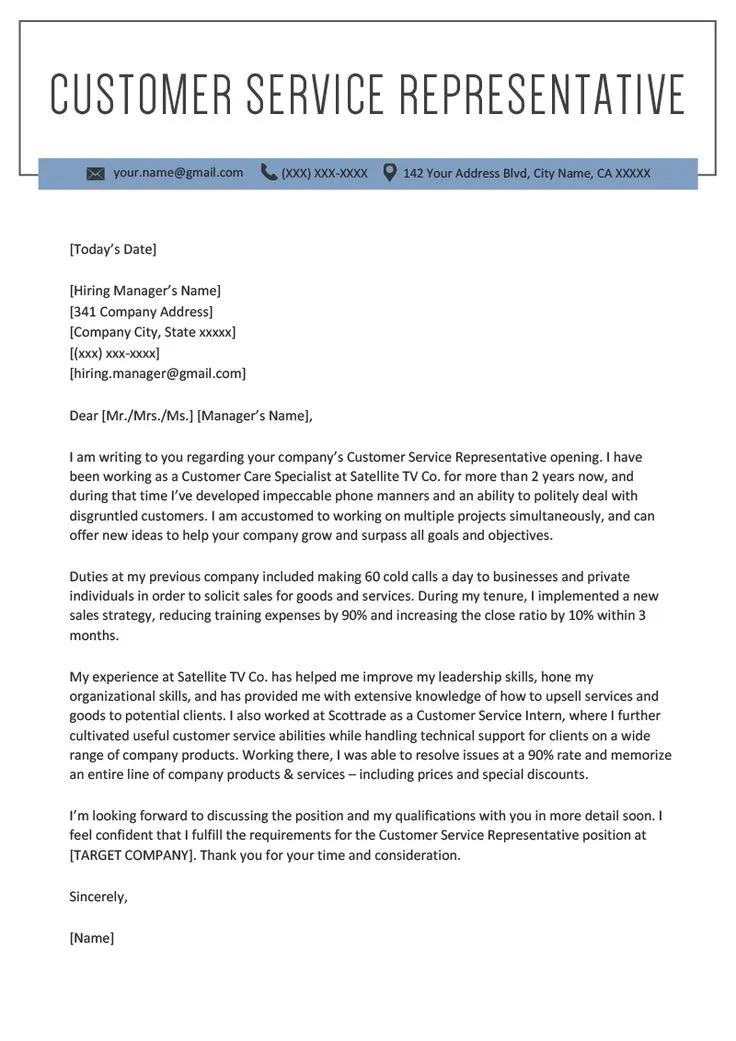
Reviewing examples of well-written customer service cover letters can provide you with valuable inspiration and guidance. These examples demonstrate how to effectively showcase your skills, experience, and personality in a way that aligns with the job requirements. Use these examples as a starting point and customize them to reflect your unique strengths and qualifications.
Cover Letter Example 1
Dear [Hiring Manager Name],
I am writing to express my keen interest in the Customer Service Representative position at [Company Name], as advertised on [Platform]. With over five years of experience in customer-facing roles, I am confident that my skills and experience align perfectly with the requirements of this position.
In my previous role at [Previous Company], I consistently exceeded customer satisfaction targets by providing prompt and effective support. I resolved an average of 50 customer inquiries daily, maintaining a 95% satisfaction rating. I am adept at active listening, problem-solving, and conflict resolution, ensuring that every customer interaction is positive.
I am excited about the opportunity to join [Company Name] and contribute to your team. My experience in [Specific Skill] aligns with [Company Goal]. Thank you for your time and consideration. I look forward to the opportunity to discuss my qualifications further.
Sincerely, [Your Name]
Cover Letter Example 2
Dear [Hiring Manager Name],
I am writing to apply for the Customer Support Specialist position at [Company Name]. Having followed [Company Name]’s work with great interest, I am eager to bring my skills and experience to your team. My background in technical support and customer relations make me a strong candidate for this role.
In my previous role at [Previous Company], I was responsible for providing technical support to customers via phone, email, and chat. I consistently received positive feedback for my ability to explain complex technical issues in a clear and concise manner. I am proficient with [Relevant Software] and have a strong understanding of [Industry Knowledge]. I have been able to improve customer satisfaction by 20%.
I am excited about the opportunity to contribute to [Company Name]’s commitment to customer satisfaction. I would love to discuss my application.
Sincerely, [Your Name]
Cover Letter Example 3
Dear [Hiring Manager Name],
I am writing to apply for the Customer Service Representative position at [Company Name], which I saw advertised on [Job Board]. With my extensive experience in customer service and a strong passion for helping others, I am confident I can make a significant contribution to your team. I also have the capacity to solve issues by using several strategies.
At [Previous Company], I was consistently praised for my ability to handle difficult customers, resolve conflicts effectively, and go above and beyond to ensure customer satisfaction. My communication skills have enabled me to build strong rapport with customers and colleagues alike, and I am highly skilled at using CRM software to manage customer data and interactions. I was able to receive the employee of the month award.
I am excited about the opportunity to leverage my customer service skills at [Company Name]. Thank you for your time and consideration. I look forward to the opportunity to discuss my qualifications further. Please, see my resume.
Sincerely, [Your Name]
Common Mistakes to Avoid
Several common mistakes can undermine your cover letter and hurt your chances of getting hired. Being aware of these pitfalls and actively avoiding them is essential. Make sure to read your letter several times. By paying close attention to these details, you can increase the effectiveness of your application.
Generic Cover Letters
Avoid sending generic cover letters that are not tailored to the specific job or company. Generic letters show a lack of interest and a failure to understand the specific requirements of the role. Customize each letter to highlight how your skills and experience align with the job description. This shows that you are genuinely interested. Tailor your approach to each job application, and do some research on the company to see the requirements needed for the specific customer service job.
Typos and Grammatical Errors
Typos and grammatical errors are a major turn-off for hiring managers. Proofread your cover letter carefully to ensure it is free of errors. A single mistake can undermine your credibility and make you appear unprofessional. Use spell-check and grammar-check tools. Have a friend or family member proofread it before submitting it. It is critical that the cover letter is flawless.
Focusing Solely on Responsibilities
Don’t simply list your past responsibilities. Instead, focus on your achievements and the results you have achieved in previous roles. Use action verbs to describe your accomplishments and provide specific examples to demonstrate your value. Show the impact you’ve made.
Tailoring Your Cover Letter to Specific Job Applications
Each job application requires a customized cover letter. Tailoring your cover letter demonstrates your attention to detail and your genuine interest in the role. A tailored letter is much more likely to impress a hiring manager and secure you an interview.
Researching the Company
Before writing your cover letter, research the company and the specific job you are applying for. Understand the company’s mission, values, and culture. This will help you tailor your letter to reflect how your skills and experience align with their needs. Demonstrate your knowledge of the company, and align their company’s goals.
Matching Skills to the Job Description
Carefully review the job description and identify the key skills and requirements. Then, highlight your relevant skills and experience in your cover letter, providing specific examples to demonstrate how you meet those requirements. Use the same keywords and phrases from the job description to show that you understand what the employer is looking for. Emphasize the key requirements that are requested from the job. Make sure you have the skills that the employer is looking for.
Demonstrating Enthusiasm
Express your enthusiasm for the role and the company. Show genuine interest in the opportunity. Explain why you are excited about working for them and what you hope to achieve. Showing enthusiasm makes a positive impression. Communicate your positive attitude to get the job.
In conclusion, writing a compelling customer service cover letter is crucial to success. By following these guidelines, you can create a cover letter that will capture the attention of hiring managers, showcase your skills and experience, and set you apart from the competition. Remember to tailor each cover letter to the specific job and company, and always proofread for errors. With a well-crafted cover letter, you’ll be well on your way to securing your next customer service role.
